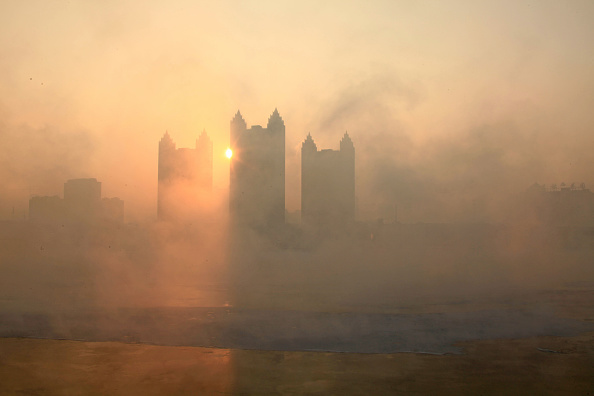
If you think your seasonal sneezing, wheezing and sniffling is getting worse, you aren’t simply imagining it.
Currently, some 50 million or so Americans suffer from nasal allergies, but the number is going up, and researchers from the Max Planck Institute for Chemistry in Germany say a pair of pollutants linked to climate change could be to blame. That’s according to a report in Science Daily.
The two gases are nitrogen dioxide and ground-level ozone, which appear to set off chemical changes in some airborne allergens, increasing their potency.
“Scientists have long suspected that air pollution and climate change are involved in the increasing prevalence of allergies worldwide,” said the institute’s Ulrich Pöschl. “Our research is just a starting point, but it does begin to suggest how chemical modifications in allergenic proteins occur and how they may affect allergenicity.”
Pöschl’s team found that ozone (a major component of smog) oxidizes an amino acid that sets off chemical reactions that ultimately alter an allergenic protein’s structure. Meanwhile, nitrogen dioxide (found in car exhausts) appears to alter the separation and binding capabilities of certain allergens.
Researchers believe that together, the two gases make allergens more likely to trigger the body’s immune response, especially in wet, humid and smoggy conditions.
The team hopes to identify other allergenic proteins that are modified in the environment and examine how these affect the human immune system.
More Must-Reads from TIME
- Donald Trump Is TIME's 2024 Person of the Year
- Why We Chose Trump as Person of the Year
- Is Intermittent Fasting Good or Bad for You?
- The 100 Must-Read Books of 2024
- The 20 Best Christmas TV Episodes
- Column: If Optimism Feels Ridiculous Now, Try Hope
- The Future of Climate Action Is Trade Policy
- Merle Bombardieri Is Helping People Make the Baby Decision
Write to Helen Regan at helen.regan@timeasia.com